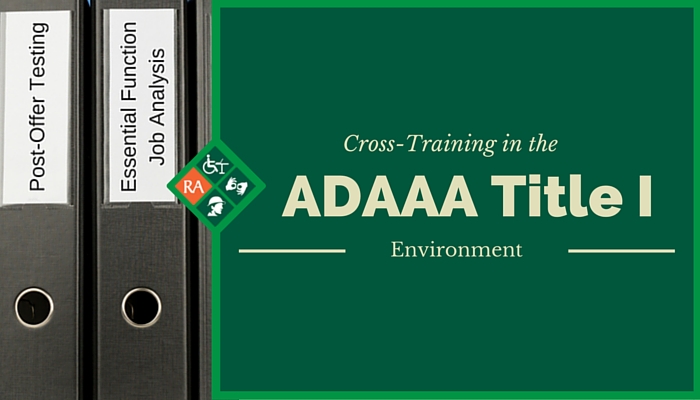I recently received an interesting question during a support call; the issues are paraphrased below:
“One issue that seems to come up at a couple employers I deal with is “cross jobs”. By this I mean, one job title is cross-trained in several other jobs and could be moved across jobs even daily. Clear definition of essential functions of a job then becomes very problematic. The companies want to do the JSAs by Job Title for use in hiring, but one job can really entail 2 or 3 jobs. Any suggestions with such a crossover?”
This type of question arises very frequently. For a disability or risk manager, the core question is, “If we need to deny hiring or advancement, or if we need to provide a reasonable accommodation to an otherwise qualified individual with a disability, how do we identify the physical demands of the essential functions of job to which the employee is attached?”
The obvious and important concept here is that we want to be able to make informed decisions because we may have to accommodate or terminate an individual at some point. To do that legally we need to know the details of the essential functions and productivity standards of his position. Remember the reasonable accommodation mantra:
One person, One job, One accommodation
Given your question, we know the person, but we do not know the definition of the job to which he is attached. One solution is to hire the individual under a single job title. If you have to perform a conditional hire, post-offer test, be sure to test against the actual demands of the job. Same goes for a request for reasonable accommodation: accommodate to the known demands of the job he “owns”.
Here are a couple of problems for the employer: First, this employer may be caught in an argument of “which job does the person actually perform?” If he is not able to perform the demands of the job to which he is assigned, or be accommodated to those demands, he may insist that he is actually capable of performing in a different position and should be transferred to that position. Why does he think this: because he has a record of able-bodied performance in this second position.
The second trap for the employer is this: If the employer says that he must do all of the jobs then the employer has fallen into the trap of “essential” versus “marginal”. If there are many people available to perform the physical demand(s) which challenges him, then he may claim that the essential function linked to that physical demand is actually a marginal function. In that case we may not deny employment on the inability to execute the demands of that particular marginal function.
Many employers want to have either one job description that covers all jobs on a plant floor or to move employees to a variety of jobs. This makes sense from an ergonomic safety point of view. My guess is that there is more benefit to rotating or shuffling people than there is liability secondary to a misstep related to terminating employment or not accommodating a marginal function. The key is to get your ADA Coordinator or Human Resource professional involved as part of the design of this type of workflow.




